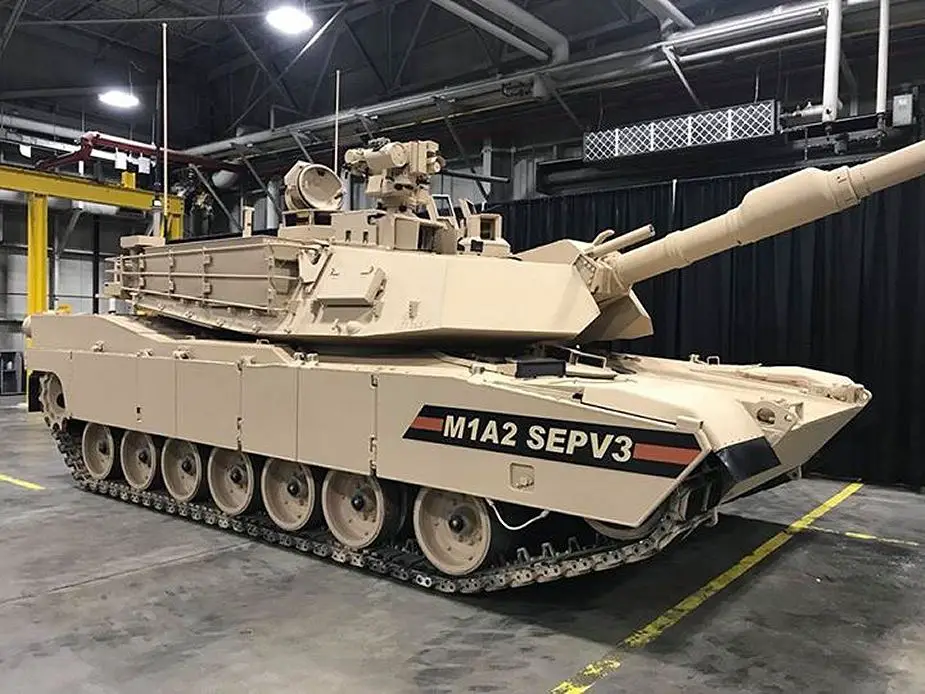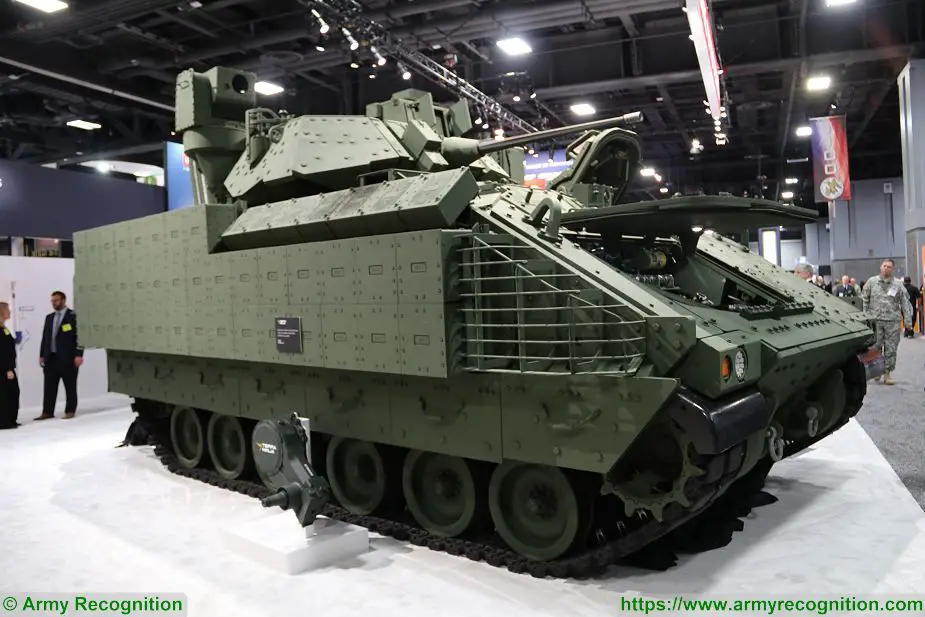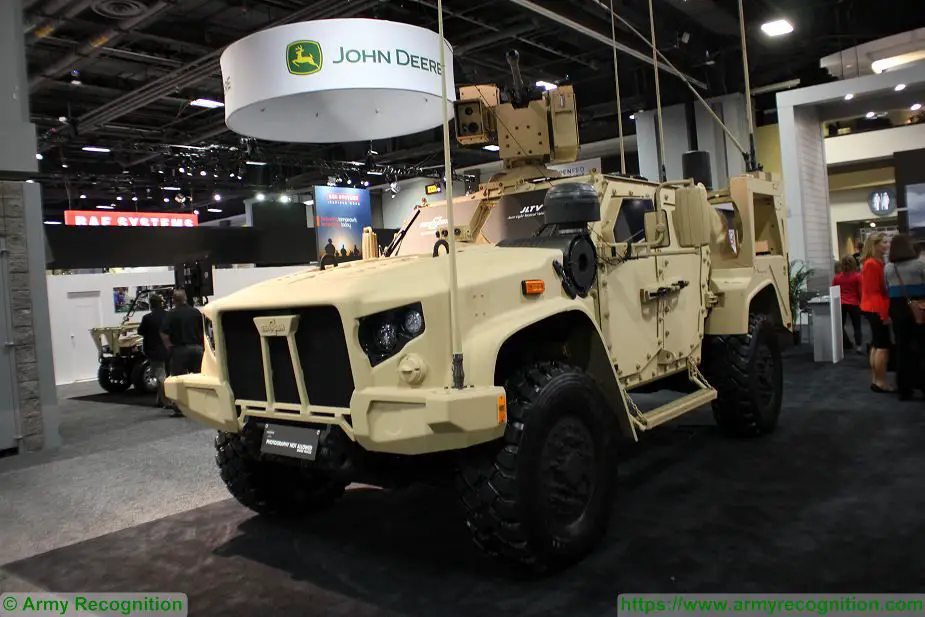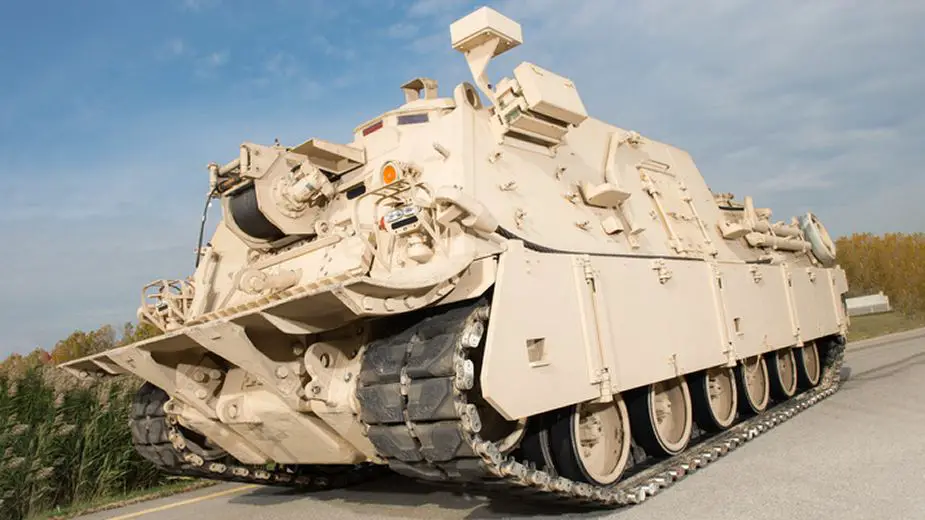US Defense budget large investment for combat and armoured vehicles
The U.S. defense budget includes a large investment for acquisition and modernization of combat vehicles including the M1 Abrams, M2 Bradley, JLTVs, M88A2 Hercule recovery vehicle and engineering vehicles.

M1A2 Abrams Sep V3 (Picture source US Army)
The M1 Abrams tank is the biggest winner in the Army's acquisition budget. US Army has requested $1.5 billion to upgrade 135 tanks (including 40 paid for with OCO funding), compared to only 20 tanks projected for FY19 in the previous year's budget plan. The Army also wants $961.6 million for other Abrams improvements, up from $248.5 million planned. Congress has historically added funding to the budget for Abrams upgrades, but now the Army is taking the initiative.
On December 21, 2017, General Dynamics Land Systems Inc., Sterling Heights, Michigan, was awarded a $2,628,902,518 fixed-price-incentive contract for the upgrade of up to 786 M1A1 configured Abrams Main Battle Tanks (MBTs) to newly configured M1A2 System Enhancement Package Version 3 (M1A2 Abrams SEP V3), and to upgrade M1A1 vehicles to M1A12S for Saudi Arabia and M1A2-K tanks for Kuwait.
The M1A2 Abrams SEP V3 (System Enhanced Package) is a modernized version of the M1A2 SEPV V2 main battle tank which has a number of upgrades in the areas of survivability, maintainability, full efficiency and network capability. In October 2015, the M1A2 SP V3 was presented for the first time at AUSA, defense exhibition in Washington D.C.
The M1A2 SEP V3 is equipped with a new improved entire IED capability electronic warfare build on the vehicle. This tank will be fitted with (IFLIR) Improved Forward-Looking Infrared to identify target. The IFLIR uses long- and mid-wave infrared technology in both the gunner’s primary sight and the commander’s independent thermal viewer.

BAE Systems Next Generation Bradley Fighting Vehicle (Picture source Army Recognition)
Funding for Bradley modifications has also increased to $675.4 million, up from $333 million planned, with another $205 million provided for 61 Bradley conversions.
At AUSA 2016, the Association of the United States Annual Meeting & Exposition, BAE Systems has launched demonstrator of Next Generation Bradley Fighting Vehicle. The concept vehicle features an upgraded chassis that allows for significantly increased underbelly protection, improved force protection for mounted troops, compartmentation of fuel and ordnance, and more space and electrical power for future technology growth.
The Next Generation Bradley includes suspension upgrades to enhance mobility to maneuver within the Armored Brigade Combat Team (ABCT). It incorporates an upgraded turret from the current Bradley and enhancements achieved during ongoing Engineering Change Proposal modernization efforts, such as suspension improvements, targeting sensors, and network connectivity. BAE Systems will use this vehicle to mature these technologies and provide a platform for development and user experimentation and evaluation.

AMPV Armoured Multi-Purpose Vehicle (Picture source Army Recognition)
The U.S. Army wants $710.2 million for 197 Armored Multi-Purpose Vehicles (AMPVs), as well as $469.1 million for development, an increase of $325.3 million from the planned amount.
The recently developed Armored Multi-Purpose Vehicle (AMPV) is intended to replace old M113 tracked APC (Armoured Personnel Carrier) in service with the United States armed forces since 1962 and to dramatically increase U.S. soldiers transport capabilities. The AMPV's will be delivered to the U.S. Army in five variants, a general purpose vehicle, mission command vehicle, mortar carrier, and medical evacuation and treatment vehicles.
The AMPV have nearly 80% more interior volume than the old M113, and significantly more power and survivability. Cooling and electrical systems are also upgraded to accommodate both existing and future upgrades.

Oshkosh JLTV Joint Light Tactical Vehicle (Picture source Army Recognition)
The request also includes $1.3 billion for 3,390 Joint Light Tactical Vehicles (JLTVs), $418.8 million for 36 Paladins M109A7, $152.9 million for 38 M88A2 Hercules recovery vehicles, and funding for 12 assault breacher vehicles and 30 joint assault bridge vehicles.
The Joint Light Tactical Vehicle (JLTV) is a United States military (specifically U.S. Army, USSOCOM, and U.S. Marine Corps) program to part-replace the Humvee[4] with a family of more survivable vehicles with greater payload. The JLTV program was approved in 2006 to begin early studies.
The contract award has a value of up to US$6.749 billion and calls for a maximum of 16,901 JLTVs, and includes a sustainment element. JLTV manufacturing will be performed in Oshkosh, WI. Oshkosh CEO, Charles Szews, said the production contract award would involve more than 300 suppliers in 31 states across the country.
In September 2011, the American Company Oshkosh unveils next generation of light combat vehicle, the L-ATV Light combat tactical All-Terrain Vehicle. In August 2015, the U.S. Army Tank-automotive and Armaments Command (TACOM) Life Cycle Management Command (LCMC) has awarded Oshkosh Defense, LLC, an Oshkosh Corporation company, a $6.7 billion firm fixed price production contract to manufacture the Joint Light Tactical Vehicle (JLTV).

M109A7 155mm self-propelled howitzer (Picture source US Army)
The Paladin M109A7 is the latest generation of artillery system in the family of M109 155mm self-propelled howitzer manufactured by the Defense Company BAE Systems, an upgrade version of the M109A6 Paladin.
The US Army awarded a $688m contract to BAE Systems in October 2013 for the production of Paladin M109A7 artillery systems, with an option to procure a total of 66 vehicle sets, including a self-propelled howitzer and an ammunition resupply vehicle.
In December 2017, the U.S. Army has awarded BAE Systems a contract that clears the path to begin full-rate production of the company’s M109A7 Self-Propelled Howitzer and M992A3 ammunition carrier vehicles.
The M109A7 program is a significant upgrade over the vehicle’s predecessor, the M109A6 Paladin Self-Propelled Howitzer. It uses the existing main armament and cab structure of the M109A6, but replaces the vehicle’s chassis structure with a new design that increases survivability and allows for the integration of drive-train and suspension components common to the Bradley Infantry Fighting Vehicle. This commonality reduces overall program cost and logistical footprint, and provides improved mobility and system survivability to maintain dominance on the battlefield.
In March 2018, field artillery soldiers of U.S. army have tested the new M109A7 Family of Vehicles (FoV) 155mm / 39 caliber Self-Propelled Howitzer (SPH) and the M992A3 FoV Carrier Ammunition Tracked (CAT).

M88A2 armoured recovery vehicle (Picture source BAE Systems)
The M88A2 HERCULES (Heavy Equipment Recovery Combat Utility Lift and Evacuation System) is an improved version of the M-88 and M88A1 heavy armoured recovery vehicle. The M88A2 HERCULES is the successor vehicle to the M88A1, which had only a recovery capability of 56 tons. The M88A1’s mission was focused on the M60 Series tank while the M88A2 is focused on the Abrams tank.
The main winch on the M88A2 is capable of a 70-ton, singleline recovery, allowing the HERCULES M88A2 to provide recovery of the 70ton M1A2 Abrams tank.
The A-frame boom and hoist winch of the M88A2 can lift 35 tons. The spade can be used to anchor the vehicle when using the main winch and can be used for light earth moving to prepare a recovery area. The M88A2 employs an auxiliary power unit to provide auxiliary electrical and hydraulic power when the main engine is not in operation. It can also be used to slave start other vehicles, as well as a means to refuel or defuel vehicles. The M88A2 can refuel Abrams tanks from its own fuel tanks.
The M88A2 HERCULES provides towing, winching and hoisting to support battlefield recovery operations and evacuation of heavy tanks and other tracked combat vehicles. As such, M88A2 HERCULES is the recovery workhorse of the Armored Brigade Combat Team.


























